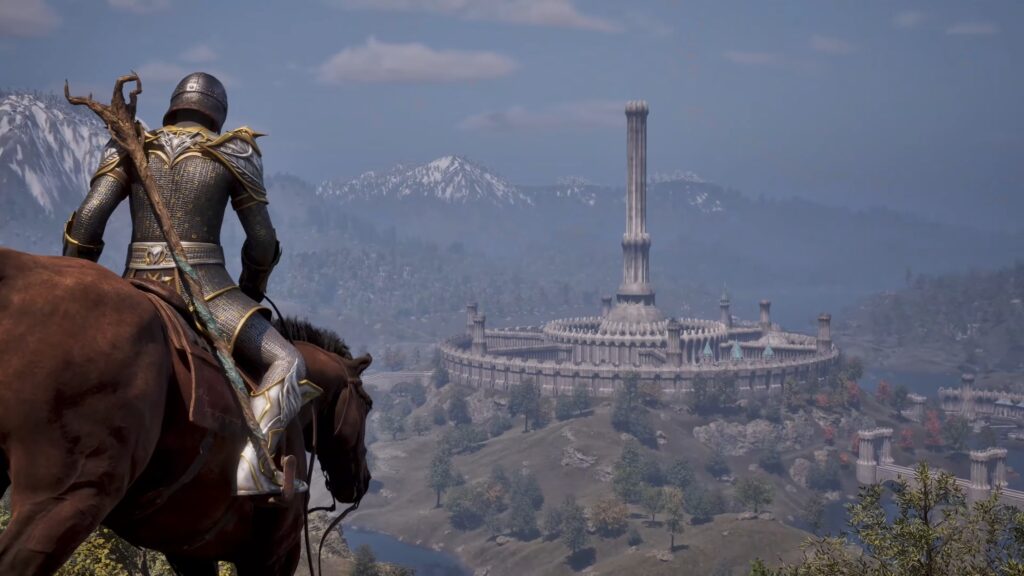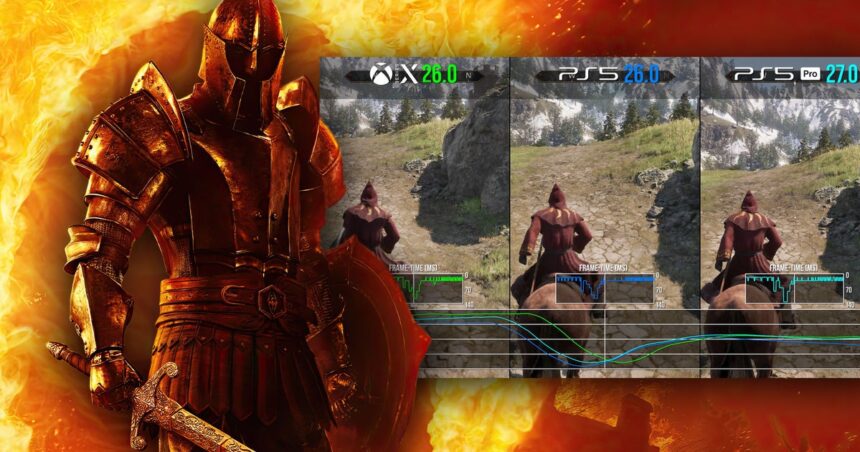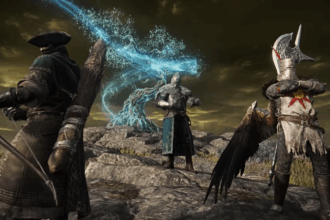Two weeks post-launch, the performance of *Oblivion Remastered* on consoles continues to raise eyebrows, and not in a good way. What began as an ambitious overhaul powered by Unreal Engine 5 has, unfortunately, revealed itself to be rife with issues across the board. No console is exempt—whether it’s the PS5, PS5 Pro, or either Xbox Series model, all players experience disruptive traversal stutters while exploring the vast world. On top of that, sub-60fps frame rates are rampant, with performance seemingly degrading over lengthy play sessions—possibly pointing to a memory leak. To top it all off, crashes to the system menu after trying to load saved games add to the frustrations on both PlayStation and Xbox platforms.
This predicament is far from ideal for any remaster, and developer Virtuos urgently needs to prioritize fixing these stability issues, particularly the crashes. Questions arise regarding the technical QA process: how did such noticeable performance issues make it through to launch? It feels as though the game was rushed to release when it clearly needed more preparation. Moreover, it’s worth noting that, unlike the Series X’s version 233550, there still isn’t a corresponding hotfix for the PS5 or PS5 Pro. After waiting for a follow-up update, it seems unlikely to surface anytime soon, so we present the current state of affairs, with both PS5 models stuck on the earlier version 233194. Ultimately, this hotfix may have less impact than anticipated.
Let’s delve into the PS5 Pro upgrade situation. According to the PlayStation Store, there’s an upgrade available for Pro users, and upon inspection, it does indeed offer a resolution boost compared to the standard PS5 and Series X. However, this is a modest increment, primarily driven by the Pro GPU across both performance and quality graphics modes, with no other visual enhancements to speak of. In performance mode, both base PS5 and Series X attempt to maintain a 1440p resolution in theory, but practically, the PS5 often hovers around 900p, while Series X slightly edges ahead at 990p. The PS5 Pro ramps this up to a higher 1620p—particularly noticeable in the inventory screen or less complex dungeons—though it can dip to 1188p during more strenuous operations. All textures, shadows, world draw distances, and the quality of Lumen’s global illumination and reflections remain unchanged, as the PS5 Pro’s GPU resources are solely dedicated to rendering more pixels per second.
Turning to the 30fps quality mode, the story remains the same, with Sony’s enhanced console providing another resolution bump. Base PS5 and Series X aim for 1620p at their best, occasionally dropping to 1296p on the lower end. Meanwhile, the PS5 Pro reaches close to a native 4K target—3484×2016 on the inventory screen during tests—though more commonly, it operates at figures like 1584p or 1620p when roaming the open world. While the potential existed for Virtuos to be more adventurous with PS5 Pro enhancements, we’re left with a conservative offering.
Performance discrepancies dominate the conversation, particularly during testing. It’s crucial to recognize that numerous factors can influence console frame rates—think variable weather, a dynamic day-night cycle, NPC placements, and enemy positions, all contributing to unpredictable results. Interestingly, PS5 and Xbox experiences also show a degradation in 60fps performance during extended play sessions. For instance, starting the game fresh—fully closing and reopening it before loading a save—often yields significantly higher frame rates than after fifteen minutes of gameplay or more. Moving between different areas or cycling through save files can easily overload the engine and lead to performance dips.
This trend holds across all console platforms. For instance, traversing Cyrodiil’s landscapes demonstrates up to a 20fps advantage on PS5 Pro during fresh boots. Similarly, both Xbox Series X and the base PS5 display the same issue, delivering higher frame rates with freshly booted saves as opposed to lengthy play sessions. Curiously, this cycle of save files also leads to graphical bugs during prolonged play, such as unexpected changes to the Lumen GI settings, causing thicker shadows on occasion—a potential explanation for the performance woes. Additionally, the camera height adjustment while on horseback is not uncommon, both issues resolved simply by restarting the game.
These patterns hint at underlying memory management problems. Re-evaluating previous console coverage reveals that the improvements attributed to the Series X hotfix may have been overestimated. Fresh tests indicate that the hotfix primarily provided benefits with new game boots rather than during continuous sessions. In the end, the ongoing issues of poor frame rates persist on both PS5 and Series X, likely exacerbated the longer the game is played. The theory of a memory leak gains traction as all consoles consistently crash after extended gameplay. Repeatedly loading the same save points consistently leads to freezes—PS5 and PS5 Pro crash at similar points, while Xbox likewise exits the game back to the main menu. Interestingly, reloading the problematic save works seamlessly after a fresh startup. While crashes may not impact every player equally, the likelihood appears to increase with longer engagement.
To approach overall performance at 60fps, the most equitable method for comparative testing involves minimizing variables—essentially resetting the game before each test on every platform. While this doesn’t reflect the game’s typical performance over time, it provides a clearer comparison of relative performance. As for the traversal hitching issue, it becomes abundantly clear that platform choice doesn’t make a discernible difference. Each console endures substantial stutters at identical locations, spiking frame time to 100ms or more, leaving PS5 Pro especially disappointing. Although the Pro hardware is constrained by the same CPU limits, suggesting similar streaming terrain bottlenecks, even a potential 10% clock boost wouldn’t change results. This is a persistent problem during open-world exploration, whereas smaller dungeon areas seem less affected.
Looking at long galloping routes towards the citadel, it becomes challenging to pinpoint a clear performance leader—each platform generally fluctuates between 35 to 60fps. Every console has its moments during the test run, further indicating that engine variables can have random impacts. Notably, the base PS5 typically achieves the lowest average of 50fps, while Series X and PS5 Pro hover around 55fps. This isn’t exactly a triumph, as all systems encounter significant dips, frequently dropping to 40fps or below and suffering from noticeable stutters. Clearly, PS5 Pro users will not experience a transformative performance uplift if maintaining a steady 60fps is the aim; even variable refresh rates do little to hide the hitching. While PS5 Pro performs better compared to the base PS5, it fundamentally faces the same issues, leaving resolution boosts as the main advantage.

The graphics options menu allows for some flexibility. In 30fps quality mode, the game remains capped at 30fps on both PS5 and PS5 Pro, generally exhibiting less frame rate fluctuation in most scenarios. Yet, this cap introduces frame pacing issues that lead to judder during camera movement—a noticeable distraction—and the same traversal stuttering is present alongside the performance mode. This scenario applies equally to Series X, making it hard to recommend on any PlayStation console.
Next, let’s discuss the reflections option. Intriguingly, there’s a screen-space reflections toggle on all consoles, defaulting to enabled. This feature appears to have minimal impact on performance during stress tests since most drops stem from streaming issues. It’s a nice option to include: SSR overlays on UE5’s Lumen reflections, employing a screen-space technique for mirror-like effects. However, it has its own drawbacks, including disocclusion artifacts on water surfaces when obscured by a weapon, which can result in reflections popping in and out depending on your perspective. Turning off SSR entirely leaves only the raw Lumen reflection, which selectively draws based on proximity to objects within a BVH structure, leading to popping as geometry enters that space. While SSR introduces its own issues, it helps mask some of Lumen’s limitations and is worth enabling.
Reflecting on my second round of console testing for *Oblivion Remastered* uncovers a multitude of issues. This isn’t merely a PS5 versus Xbox dilemma; all consoles share in the struggles with stuttering, crashes, bugs, and significant drops in performance as well as an inconsistent frame rate in quality mode. Revisiting with a focus on PS5 consoles alone highlights the urgent need for a patch to tackle these overarching problems. Despite the potential to celebrate a classic RPG and a chance for both old and new fans to relish a landmark entry in the Elder Scrolls series, the experience is hampered by persistent technical shortcomings. Here’s hoping a patch is on the horizon.























